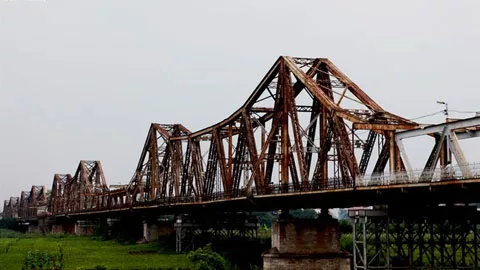Besides, Hanoi is also considered as one of Asia’s most visually exciting cities. The capital is home to Vietnam’s best museums and some of its most important monuments. Most of them are within walking from Hanoi Old Quarter. Below is the list of famous and wonderful museums that would inspire you most.
• Vietnam Museum of Ethnology: You should not miss this wonderful museum. Designed with assistance from a famous museum in Paris, it features a fascinating collection of art and everyday objects gathered from Vietnam and its diverse tribal people. From the making conical hats to the ritual of a Tay shamanic ceremony, the museum explores Vietnam’s cultural diversity. Displays are labeled in Vietnamese, French and English.
The museum is in the Cau Giay district, about 7km from the city centre. The trip takes up to 30minutes by taxi.
• Temple of Literature: The Temple of Literature is a temple of Confucius in Hanoi, northern Vietnam. The temple hosts the “Imperial Academy” (Quoc Tu Giam), Vietnam’s first national university. The temple was built in 1070 at the time of King Ly Nhan Tong. It is one of several temples in Vietnam which are dedicated to Confucius, sages and scholars. The Temple is located to the south of Thang Long Citadel. The various pavilions, halls, statues and stelae of doctors are places where offering ceremonies, study sessions and the strict exams of the Dai Viet took place. Just before the Vietnamese New Year celebration Tet, calligraphists will assemble outside the temple and write wishes in Han characters. The art works are given as gifts or are used as home decorations for special occasions.
• Ho Chi Minh complex: Vietnam takes pride on the very first President – Ho Chi Minh (or Uncle Ho), the National Liberation Hero, who founded the Democratic Republic of Vietnam, expressed in the construction of Ho Chi Minh Complex in Hanoi.
President Ho Chi Minh was born in May, 19th 1890 in Nghe An province and passed away on September, 2nd 1969 in Hanoi, the capital of Vietnam. He was recognized by UNESCO as the one who “devoted his whole life to the national liberation of the Vietnamese people…”. In honor of the President’s gratitude, the Government had the Hochiminh Complex established inside capital Hanoi after he was gone. Built in Ngoc Ha village, Ba Dinh district, Hanoi city, Hochiminh complex consists of Ho Chi Minh’s Mausoleum, Ba Dinh square, Presidential Palace, Uncle Ho’s House on stilt, One pillar pagoda and Ho Chi Minh Museum. Today, Ho Chi Minh complex becomes very popular among tourist community as well as local people who come and show their respects to the greatest President.
• Women Museum: The Vietnamese Women’s Museum was founded by the Socialist Republic of Viet Nam in 1987 as an entity within the Viet Nam Women’s Union. The museum explores Viet Nam’s cultural diversity and women’s significant contributions to the nation’s development, culture and society. The Vietnamese Women’s Museum is a community repository of cultural and historical knowledge about Vietnamese women’s lives across the nation’s 54 ethnic community groups. The Museum is also a centre for cultural exchange with women from other nations with the goal of fostering ‘equality, development and peace’. The permanent galleries feature three thematic displays: Women in Family, Women in History, Women’s Fashion. The Museum’s collection features historical and contemporary objects which illustrate and reflect the lives and roles of Vietnamese women in society.





Comment (0)